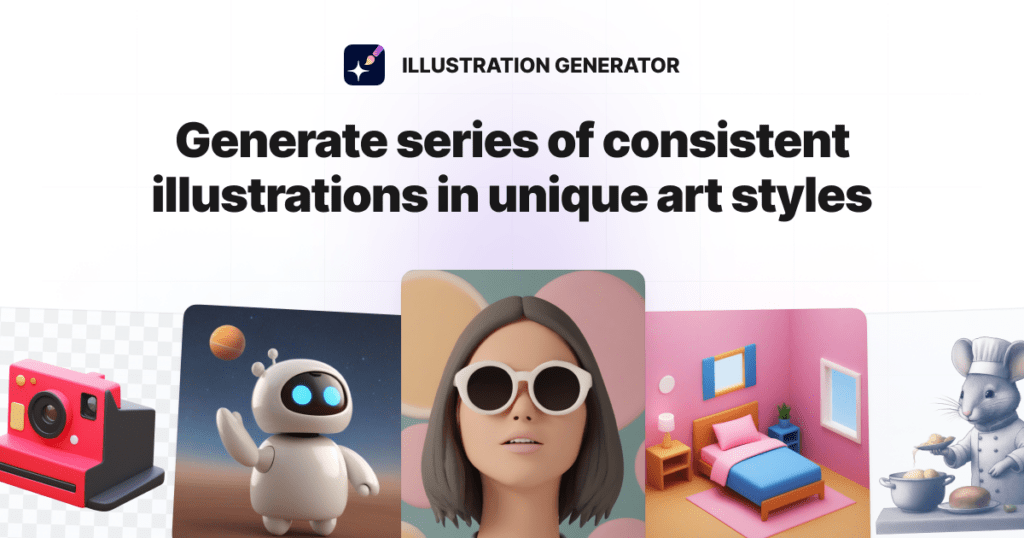The Evolution of Design-Assist Technologies
The landscape of visual content creation has undergone significant transformation with the emergence of AI-powered tools. These technologies are redefining efficiency, accessibility, and creative possibilities across multiple sectors. Among these innovations, the Illustration Generator by Icons8 stands as a notable advancement that merits detailed examination.
Democratization of Visual Resources
Perhaps the most profound impact of this technology has been the unprecedented access to professional-quality illustrations for groups previously excluded from custom visual assets due to resource constraints:
- Educational institutions with limited design budgets can now enhance learning materials
- Small businesses can develop cohesive visual identities without significant investment
- Non-profit organizations can create engaging campaign materials with minimal resources
- Independent content creators can elevate their visual communication strategies
- Startups can establish professional visual presence from inception
This democratization extends beyond mere cost reduction—it represents a fundamental shift in who can communicate with visual sophistication. A curriculum director at an educational technology company notes: “We’ve measured a 28% increase in information retention when complex concepts are accompanied by these custom illustrations, something we simply couldn’t afford with traditional illustration methods.”
Time-Economy Analysis
The efficiency gains provided by this technology become evident when comparing traditional illustration workflows with AI-assisted processes:
Traditional Illustration Process:
- Client consultation (2-4 hours)
- Concept development (4-8 hours)
- Feedback integration (2-4 hours)
- Final artwork creation (8-16 hours)
- Revision cycles (2-8 hours)
Total time: 18-40 hours (typically spread across 1-2 weeks) Typical cost: $500-2,500
AI-Assisted Process with the ai vector generator:
- Prompt development and refinement (5-15 minutes)
- Generation and selection (1-5 minutes)
- Minor adjustments if necessary (10-30 minutes)
Total time: 16-50 minutes Cost reduction: Approximately 90%
This represents a paradigm shift in resource allocation, enabling organizations to redirect design budgets toward strategic creative direction rather than production.
Technical Architecture and Capabilities
The system’s effectiveness stems from its sophisticated technical foundation:
- Vector-based output ensures resolution independence and scalability
- Advanced semantic interpretation translates natural language into visual elements
- Style consistency algorithms maintain coherence across multiple illustrations
- Intelligent composition applies established design principles automatically
- Multi-element scene construction from complex descriptive prompts
These technical capabilities enable the tool to generate illustrations that maintain professional quality while significantly reducing production time.
Industry-Specific Implementation Models
Software Development Teams
Development teams have integrated this technology in ways distinct from traditional design applications:
- Creating consistent interface illustrations across platforms
- Generating placeholder visuals during early development phases
- Illustrating documentation and user guides efficiently
- Establishing visual libraries that maintain coherence across products
A product manager at a SaaS company reports: “The ability to quickly iterate on interface illustrations has reduced our design-development handoff friction by approximately 40%. Developers can now generate consistent visual assets that align with our design system without waiting for designer availability.”
Marketing and Content Strategy
Content strategists and marketers have developed specialized workflows around this technology:
- Rapid generation of supporting visuals for content campaigns
- Creating consistent illustration sets across multiple content pieces
- Developing visual narratives that complement written content
- Producing custom illustrations for social media and digital marketing
These applications have enabled marketing teams to maintain visual consistency while significantly accelerating content production timelines.
Educational Applications
In instructional contexts, the technology serves unique functions:
- Visualizing abstract concepts for improved comprehension
- Creating inclusive representations in educational materials
- Developing consistent visual systems for learning platforms
- Supporting visual learning strategies with custom illustrations
These applications have particular value in educational settings where budget constraints previously limited access to custom illustrations.
Technical Boundaries and Strategic Integration
Despite its capabilities, the system has defined limitations that inform effective implementation:
- Complex anatomical illustrations require human refinement
- Multi-character scenes with specific interactions benefit from human direction
- Highly specialized artistic techniques are approximated rather than replicated exactly
- Brand-specific visual languages still require expert establishment and guidance
These constraints necessitate a strategic approach where the technology serves as one component in a comprehensive visual communication strategy rather than a complete replacement for human expertise.
Ethical and Professional Considerations
The emergence of AI-assisted illustration raises important questions for the design profession:
- Shifting the designer’s role toward direction and curation rather than execution
- Redefining the value proposition of visual design services
- Establishing appropriate attribution models for AI-assisted work
- Developing new pricing models that reflect changed production economics
These considerations are actively shaping how design professionals integrate this technology into their practice while maintaining their professional value.
Future Development Trajectories
Based on current capabilities and limitations, several development paths appear likely:
- Enhanced stylistic control with more granular parameters
- Improved handling of narrative and sequential illustrations
- Animation capabilities for simple motion graphics
- Integration with existing design tools through robust APIs
- Advanced customization options for organization-specific visual languages
These potential developments would address current limitations while expanding the tool’s applicability across additional use cases and professional contexts.
Conclusion: A Tool for Augmentation Rather Than Replacement
The Icons8 Illustration Generator represents a significant advancement in design-assist technologies. Its impact lies not in replacing human creativity but in augmenting it—expanding access, accelerating processes, and enabling design professionals to focus on strategic direction rather than technical execution.
The most effective implementation approaches recognize both the tool’s capabilities and limitations, using it to enhance human creativity rather than replace it. As with most technological advancements in creative fields, the optimal results emerge through thoughtful integration rather than wholesale substitution.
For organizations and professionals seeking to incorporate AI-assisted illustration into their workflows, a measured approach that leverages the tool’s strengths while compensating for its limitations will yield the most substantial benefits, transforming not just the economics of illustration but the very nature of visual communication work.

